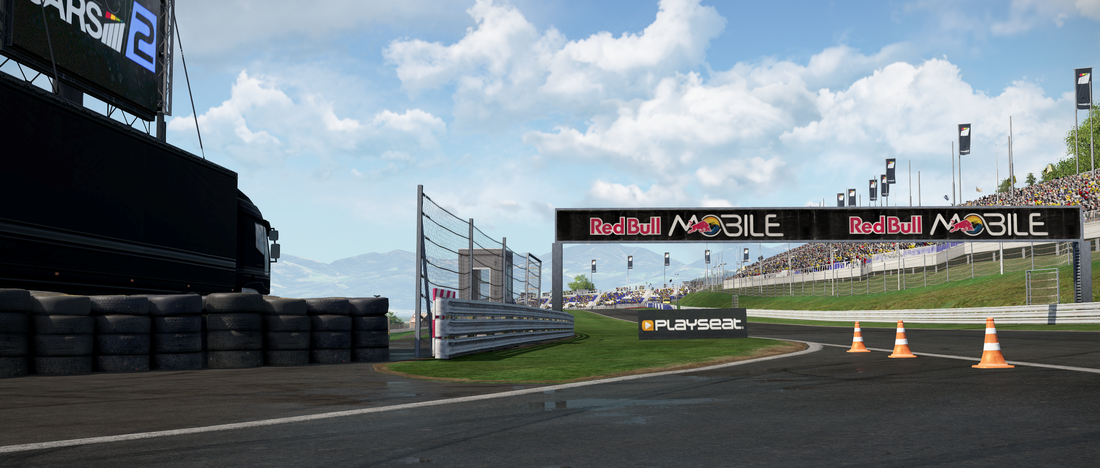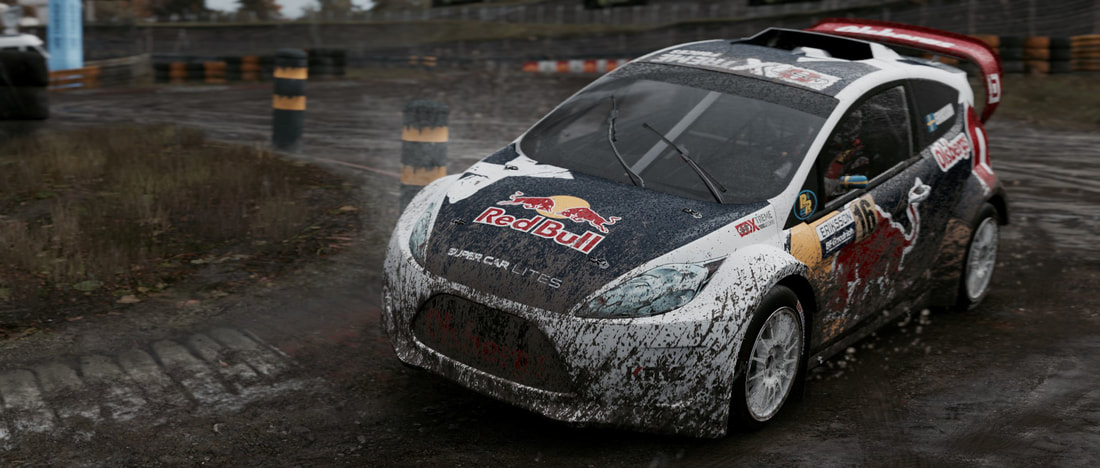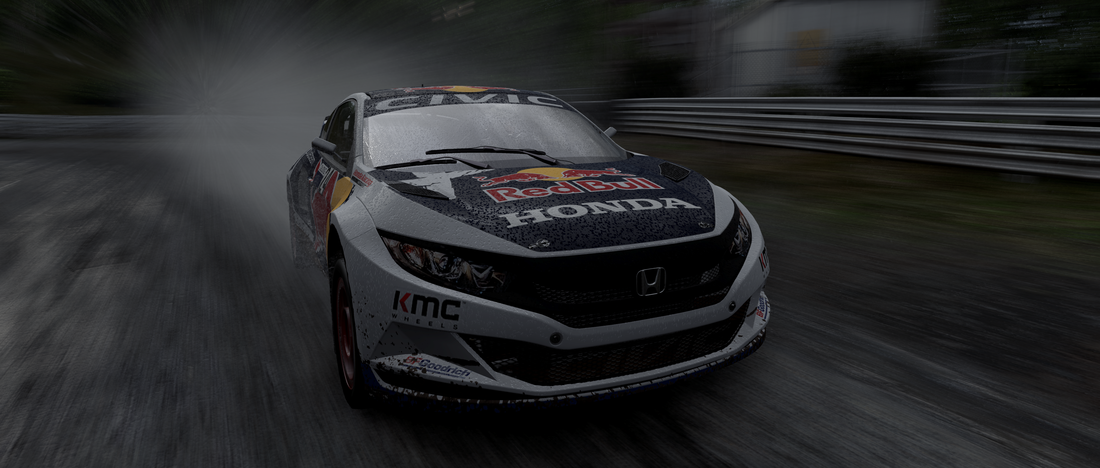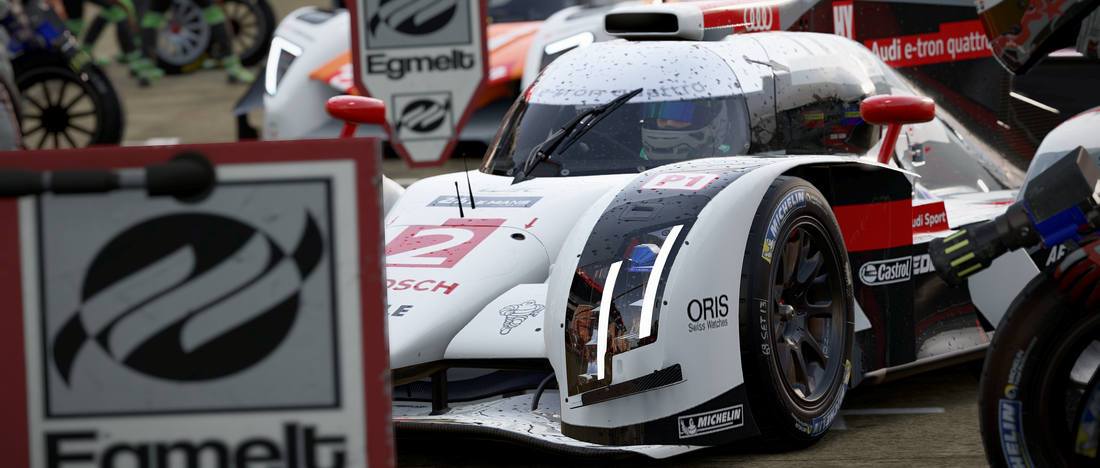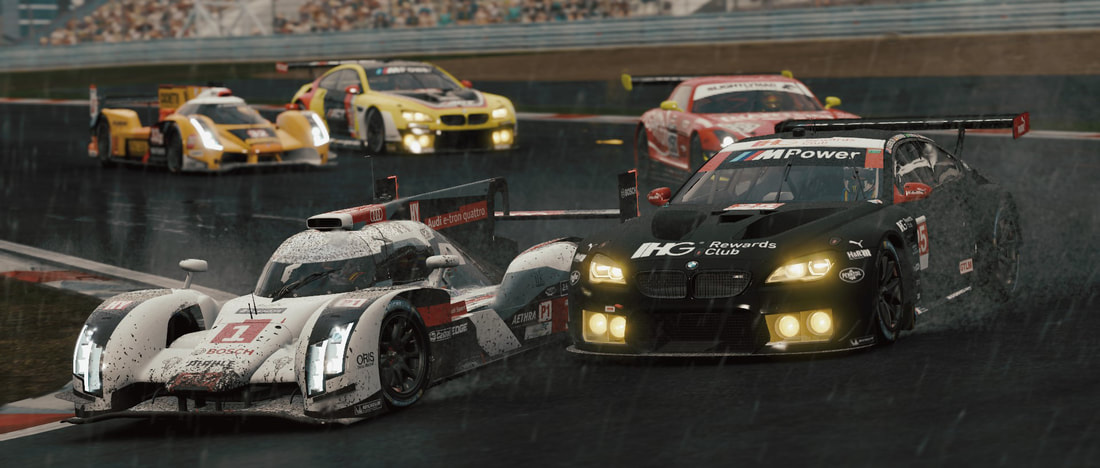Red Bull 5G winner Ralphy from eSports+Cars tells you how to get ahead of your opponents in the new racer.
John Ralph, knows what it takes to drive realistic racecars to victory in an esports tournament. The Project CARS pro helped Team South win Red Bull 5G last year, leading from the front with his flawless driving skills. Skills which led him to be signed up by top sim racing team eSports+Cars.
So, if you fancy taking your driving to the next level and competing against some of the best players, Car_Ralphy is worth listening to. Here are his top tips for success in Project CARS 2 – follow his advice to play like a pro.
John Ralph, knows what it takes to drive realistic racecars to victory in an esports tournament. The Project CARS pro helped Team South win Red Bull 5G last year, leading from the front with his flawless driving skills. Skills which led him to be signed up by top sim racing team eSports+Cars.
So, if you fancy taking your driving to the next level and competing against some of the best players, Car_Ralphy is worth listening to. Here are his top tips for success in Project CARS 2 – follow his advice to play like a pro.
LEARN THE TRACK BEFORE YOU START PUSHING
If you're driving on track you have never driven on, the very first thing to do is learn it properly. Don’t drive too fast – all you need to do is learn where the track goes and what is coming next. I generally always say, you do not know a track unless you can picture the entire track in your head. Only when you can visualise the entire track and you no longer need to use the track map can you say you have learned it fully.
PAY ATTENTION TO CURBS AND TRACK LIMITS
In Project CARS 2, some curbs are very slippery, so as you learn tracks pay attention to which curbs you can drive over and which ones you can’t. You will instantly feel the car get sucked over the curb if the curb is slippery.
Also, avoid large curbs as they can cause the car to bounce, which will cause you to lose acceleration and even spin.
The track limits are quite strict in Project CARS 2 and in some places they are extremely strict, so as you are learning the track, also work out what the track limits are. Always use Free Practice mode or Time Trial mode to learn limits, because there is no harm in getting any penalties from going beyond the limits.
Also, avoid large curbs as they can cause the car to bounce, which will cause you to lose acceleration and even spin.
The track limits are quite strict in Project CARS 2 and in some places they are extremely strict, so as you are learning the track, also work out what the track limits are. Always use Free Practice mode or Time Trial mode to learn limits, because there is no harm in getting any penalties from going beyond the limits.
LEARN HOW MUCH STEERING ANGLE CAN BE USED
Different cars require different amounts of steering input. When you are learning tracks, also work out how much steering input is required before you start to understeer for the car you are driving.
Simply keep turning the wheel more and more through corners until you feel the car is not turning any sharper. Do this on as many corners as possible so you get a good idea of the steering angle required for each turn. One of the most common mistakes people make in sims is steering too much. This will just cause the front tyres to slide, which results in severe understeer, and will also scrub off speed.
Simply keep turning the wheel more and more through corners until you feel the car is not turning any sharper. Do this on as many corners as possible so you get a good idea of the steering angle required for each turn. One of the most common mistakes people make in sims is steering too much. This will just cause the front tyres to slide, which results in severe understeer, and will also scrub off speed.
KNOW THE GEAR YOU'RE IN WITHOUT LOOKING AROUND THE HUD
Whilst driving you will want to prevent as much visual distraction as possible. It is very hard to drive fast and precisely when you keep having to check which gear you are in every other second. Count the gears as you go up, and do the same as you change down. Doing this means there is one less thing to keep an eye on.
CHANGE GEAR BY LISTENING TO THE ENGINE
As with point four, learning when to change gear without having to look around the HUD will help keep you focused on the track. To do this, you need to change gear based on engine noise. Bring up the telemetry and locate the power usage indicator (in the bottom right). Find the point where the car is using maximum power and familiarise yourself with the sound of the engine at that point –generally the time to change gear is just before the redline but this can be different for some cars.
FIND BRAKING POINTS
The first thing you need to remember when finding braking points is ALWAYS use fixed brake markers (i.e things can can’t be destroyed if a car hits it). The last thing you need in a race is to lose your brake marker because someone crashed into it! You can use anything you want as a brake marker, it could be a marking on the track, a curb stone, a tree, a post, anything providing it is fixed.
When looking for braking points, you will need to find a point that allows you to continue braking until you reach the apex (more on this next).
When looking for braking points, you will need to find a point that allows you to continue braking until you reach the apex (more on this next).
NEVER COAST
There is one rule I have in sim racing as a whole, and that is: if you are coasting you are not going fast enough. You should always be either on the throttle or on the brake no matter how small the input is.
Braking – you need to be on the brakes from your chosen brake marker right up to the apex on any corner. Do 100% of your braking in a straight line, then when you begin to turn in you need to start slowly releasing the brake. The brake should be fully released just before the apex. This technique is known as trail braking.
By releasing the brakes just before the apex you minimise the risk of slowing down too much – this also gives you enough time to get back on the throttle right on the apex, giving you maximum speed out the corner.
Accelerating – as a general rule, only begin accelerating when you know you will not need to lift off again. This is almost always right on the apex providing you have not gone into the turn too fast. As soon as you are off the brakes start to apply throttle so you avoid having to coast.
Braking – you need to be on the brakes from your chosen brake marker right up to the apex on any corner. Do 100% of your braking in a straight line, then when you begin to turn in you need to start slowly releasing the brake. The brake should be fully released just before the apex. This technique is known as trail braking.
By releasing the brakes just before the apex you minimise the risk of slowing down too much – this also gives you enough time to get back on the throttle right on the apex, giving you maximum speed out the corner.
Accelerating – as a general rule, only begin accelerating when you know you will not need to lift off again. This is almost always right on the apex providing you have not gone into the turn too fast. As soon as you are off the brakes start to apply throttle so you avoid having to coast.
BE SMOOTH
As in real life, smooth is fast! Do not 'saw away' at the wheel, do not constantly dab the throttle and do not dab at the brakes. Doing any of those will result in the weight shifting around far too much, which in turn causes you to lose grip. Always turn the wheel smoothly, always apply throttle smoothly and always apply the brakes smoothly. For example, it is better to slowly apply throttle coming out of a turn than be constantly on/off the throttle.
DRIVE CLOSE TO THE CAR IN FRONT
As a general rule, when you are driving close behind another car it is up to you to avoid a crash. Do this by braking slightly earlier than normal, then even earlier than normal when you have caught slipstream. If you try and use your normal braking point whilst directly behind someone you will just go into the back of them. Trying to use your normal brake marker when following someone closely without attempting an overtake results in one of the most common types of crashes.
WATCH YOUR OPPONENT'S BRAKING WHEN OVERTAKING
When trying to overtake someone, stay behind them for a few corners and watch closely to see where they brake. If they generally brake earlier than you, usually you are fine to make a dive down the inside into a corner from two or three car lengths behind. When doing this make sure you use your exact brake point and overtaking on the inside is usually best. Remember you will need to slow down a little more than normal as you will not be able to carry as much speed into the turn due to you being closer to the inside of the track.
If you are attempting to get past someone who uses the same braking points as you, you will need to be roughly within a car length to make a successful dive.
If you are attempting to get past someone who uses the same braking points as you, you will need to be roughly within a car length to make a successful dive.


